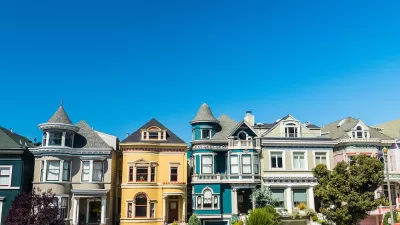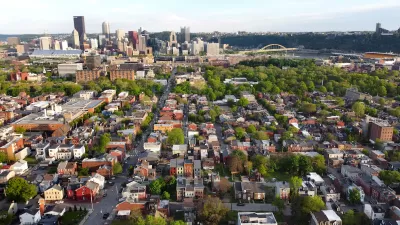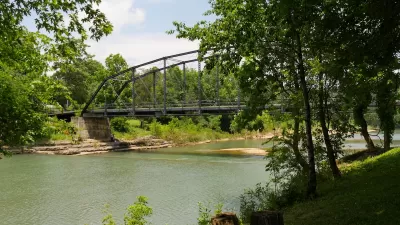An opinion piece acknowledges the similarities between the nostalgia of New Urbanism and the "Make American Great Again" sentiment behind Trump's rise to power. New Urbanism has a chance, still, to change its path.
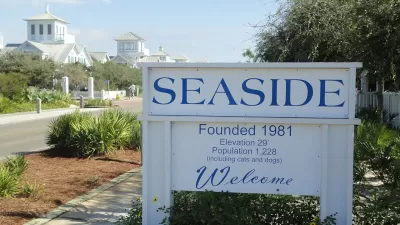
New Urbanism, the 25-year-old movement to reclaim the American city from the suburbs, is arguably the most recognizable planning movement in recent history. Founded on the principle that placeless sprawl, the disinvestment in central cities, and the traditional mechanisms of development regulation is inequitable and unsustainable, New Urbanists proposed a design and planning solution that harkens back to a past America. An America that got cities right, and can again. If that idea sounds familiar to you, you're not alone.
For the past few years, I've covered New Urbanism in my graduate Urban Design Seminar. There's always a lively discussion where the students debate the pros and cons of New Urbanism, but this year the discussion turned bleaker than ever, faster than ever. The reason: #MAGA.
Just as John Stewart questioned Trump's campaign promise of what exactly it means to “make American great again,” the students immediately questioned what, exactly, New Urbanism is trying to re-create. Many students suggested that whatever it is, New Urbanism's vision for the country sounds eerily similar to Trump's platform—one promising a frame-by-frame recreation of the best of Leave it to Beaver, with a splash of Lassie.
That critique is not new to New Urbanism. As Peter Marcus wrote nearly 20 years ago, New Urbanism appeals "to a nostalgia for a past never experienced, reflecting a fear of the urban rather than a new urbanism." What is new: the right-wing agenda, espoused by our president and Republican majorities in both houses of Congress, adamantly opposes social and environmental justice. That is, the Republicans are using a similar nostalgia to that associated with New Urbanism for regressive ends, antithetical to the Charter of the New Urbanism.
From my perspective, New Urbanism has been at a crossroads for a long time. Criticizing New Urbanism for the misplaced nostalgia it invokes is neither new, nor necessarily fair. And I applaud the New Urbanist movement for setting a bar, starting a conversation, and offering real solutions. But the challenges and critiques of New Urbanism have taken on a new immediacy in light of the social and political upheaval ushered in by the ascendance of Donald Trump—particularly that the danger that New Urbanism, with goals I wholeheartedly support, is irrevocably tied to a delusional vision of American exceptionalism and a past greatness that never existed.
For the better part of its history, New Urbanism has been dealt a variety of scathing critiques, such as its practical inability to accommodate diversity in “use and population” and its inability to significantly reduce reliance on the automobile. But these critiques haven't stopped the "New Urban" label from being applied to market rate, greenfield developments on the periphery of cities around the country. My concern is that without addressing these issues, New Urbanism risks being reduced to only another means of perpetuating the problems it seeks to remedy.
Assuming (and I'm 99% certain this is the case) that seeing #CNU and #MAGA together in a late-night presidential Twitter rant would make many New Urbanist's skin crawl, the question is, what can be done? How can New Urbanism avoid becoming the punchline of a tragic joke at a planning department happy hour? I see one obvious path: get serious about addressing the criticisms of the movement.
I think the first step is admitting that design alone is incapable of addressing the lack of diversity and continued reliance on cars that plague New Urban developments. As Andres Duany has said, “The New Urbanism is agnostic to style,” and thus should accommodate the tastes, lifestyles, and customs of all. But that only appears to be true as long as you can afford it. For example, in a 2010 study, Emily Talen found that of 152 New Urbanist developments she surveyed, only 10 percent were affordable to someone making the median salary for a teacher. Great design, regardless of style, is the wrong tool to address affordability.
Similarly, studies continue to demonstrate that New Urbanist design supports walking and bicycling, but the effect of design doesn't extend beyond the neighborhood. The problem of auto-dependence arises when you try to leave the development: if you live in a New Urbanist community in a sprawling, auto-oriented city, you may be able to walk down the street to get your morning coffee, but leaving that community means getting in your car.
Getting serious about addressing New Urbanism's flaws means getting past design and into policy. Indeed, almost ten years ago Jennifer Steffel Johnson and Emily Talen found policy to be the primary barrier to affordable New Urbanist developments. What I suggest: in light of current politics, the New Urbanists need to get political.
The inauguration of the 45th President of the United States has motivated millions of Americans to march, to donate, and to question their elected officials. So far, the Republican Party continues to tear itself apart trying to rule, and the Democratic Party struggles to capitalize on the popular rage against the Trump Administration. Maybe we (i.e., people working towards socially and environmentally just cities in the United States) need a New Urbanist Party?
I don't think it is much of a stretch to imagine a New Urbanist Party. The Charter of the New Urbanism looks to me like a ready-made party platform. It might be long on ideas and short on solutions, but just as we have 25 years of New Urbanism, we have nearly as many years of scholarship to develop an evidence-based platform.
Dan Piatkowski is an assistant professor of Community and Regional Planning at the University of Nebraska–Lincoln. His research interests include travel behavior, walking and bicycling, and the intersection of urban design and transportation planning.

Planetizen Federal Action Tracker
A weekly monitor of how Trump’s orders and actions are impacting planners and planning in America.

Vehicle-related Deaths Drop 29% in Richmond, VA
The seventh year of the city's Vision Zero strategy also cut the number of people killed in alcohol-related crashes by half.
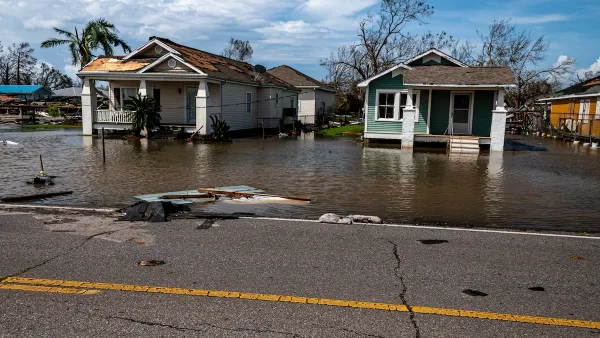
As Trump Phases Out FEMA, Is It Time to Flee the Floodplains?
With less federal funding available for disaster relief efforts, the need to relocate at-risk communities is more urgent than ever.

Texas Safety Advocates Raise Alarm in Advance of Tesla Robotaxi Launch
The company plans to deploy self-driving taxis in Austin with no oversight from state or local transportation agencies.

How to Fund SF’s Muni Without Cutting Service
Three solutions for bridging the San Francisco transit agency’s budget gap without reducing service for transit-dependent riders.

Austin Tests Self-Driving Bus
Autonomous buses could improve bus yard operations for electric fleets, according to CapMetro.
Urban Design for Planners 1: Software Tools
This six-course series explores essential urban design concepts using open source software and equips planners with the tools they need to participate fully in the urban design process.
Planning for Universal Design
Learn the tools for implementing Universal Design in planning regulations.
Borough of Carlisle
Smith Gee Studio
City of Camden Redevelopment Agency
City of Astoria
Transportation Research & Education Center (TREC) at Portland State University
City of Camden Redevelopment Agency
Municipality of Princeton (NJ)


























